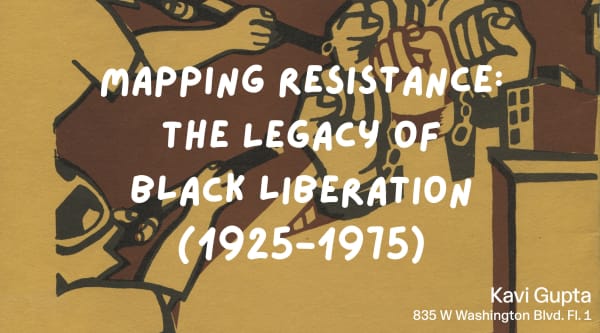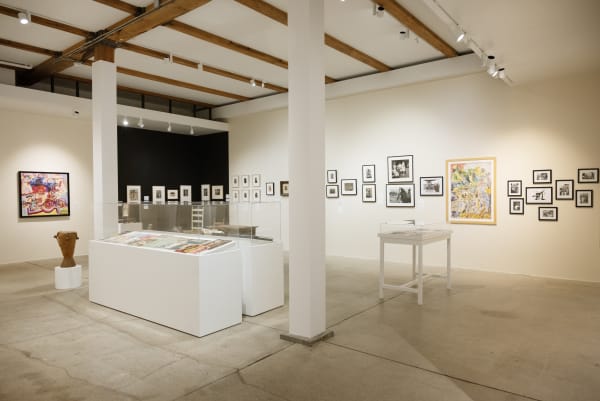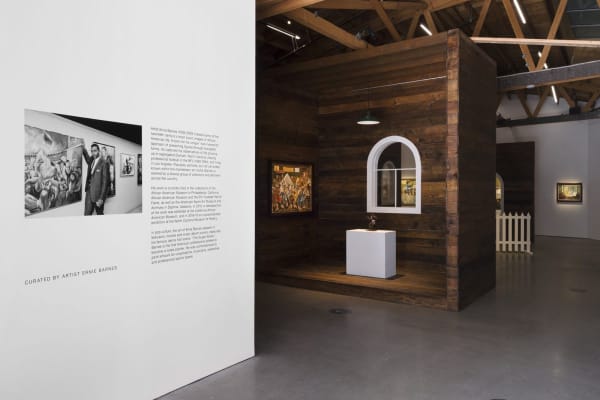Ernie Barnes 1938-2009
Ernie Barnes (1938–2009) forged one of the most singular visual vocabularies in twentieth century American art, shaped by a life that moved between the brutality of the gridiron and the expressive possibility of the studio. Before he became widely celebrated for his dynamic, elongated figures, Barnes spent six seasons as an offensive lineman with the San Diego Chargers, the New York Titans, and the Denver Broncos. The experience left him with a deep ambivalence toward the sport that had given him opportunity. He spoke plainly about the toll of football, describing its violence as a force he sought to leave behind. Critics who first encountered his paintings recognized a new kind of physicality in his work and drew comparisons to George Bellows, noting how Barnes transformed lived conflict into a charged visual energy.
Born in Durham, North Carolina, Barnes attended North Carolina College on a full athletic scholarship, majoring in art. It was there that sculptor Ed Wilson became a decisive influence, introducing him to the legacy of early twentieth century African American artists and pushing him to consider how the kinesthetic intelligence of his athletic life could become material for painting. Barnes absorbed the sinuous distortion of Italian Mannerism and the narrative sweep of artists like Thomas Hart Benton and Charles White, but he filtered these lineages through his own embodied memory. The result was a signature style: elongated, rhythmic figures that seem to move in unison, vibrating with communal emotion. His compositions carried an immediacy that resonated far beyond traditional art audiences. Hollywood collectors gravitated to his paintings, and his imagery entered the national imagination through television and music, amplifying his impact on popular culture.
Institutional recognition has continued to deepen appreciation for the breadth of Barnes’ contribution. In recent years, Barnes’s work has been the focus of a powerful wave of institutional and gallery attention, underscoring the breadth and cultural urgency of his legacy. The California African American Museum’s 2019 retrospective offered the most expansive view of his practice to date, bringing together paintings, archival material, and personal ephemera to trace the evolution of his visual language and reaffirm the enduring resonance of The Sugar Shack. From 2018 to 2019, the North Carolina Museum of History anchored his story in the region that shaped him, exploring how his early life in the South informed the emotional tenor and kinetic sensibility of his canvases. Subsequent presentations have expanded his reach into new critical contexts: UTA Artist Space in Los Angeles mounted Ernie Barnes: Liberating Humanity from Within in 2020, highlighting the spiritual dimension and expressive force of his later work; in 2024, Andrew Kreps Gallery and Ortuzar Projects in New York presented Ernie Barnes: In Rapture, a five-decade survey that illuminated the ecstatic physicality that defines his oeuvre; and in 2025, the Mint Museum in Charlotte placed The Sugar Shack on view for the first time in Barnes’s home state, offering a poignant return for the painting that influenced generations. That same year, Barnes’s work entered the thematic framework of Kavi Gupta Gallery’s exhibition Mapping Resistance: The Legacy of Black Liberation (1925–1975), situating him within a broader narrative of Black visual futurity and affirming the relevance of his art within contemporary discourses of history, movement, and collective imagination.
-

Mapping Resistance: The Legacy of Black Liberation (1925-1975)
KAVI GUPTA | WASHINGTON BLVD. FL. 1 25 Apr - 10 Oct 2025Spanning five decades featuring works by Gerald Williams, Wadsworth Jarrell, Sherman Beck, Jeff Donaldson, Omar Lama, and photographic works from the Kavi Gupta Archive by James P. Ball, James Van Der Zee, and Carl Van Vechten, this exhibition traces a lineage of artists whose practices assert the power of image-making as both cultural archive and radical form.Read more -

Ernie Barnes: Liberating Humanity from Within
UTA Artist Space 11 - 28 Nov 2020BEVERLY HILLS, CA (November 9, 2020) – UTA Artist Space is pleased to present Liberating Humanity From Within , featuring works from the Estate of Artist Ernie Barnes . The...Read more
-

Closing Celebration: Mapping Resistance: The Legacy of Black Liberation (1925-1975)
KAVI GUPTA | WASHINGTON BLVD. FL.1 10 Oct 2025Join us for the closing reception of Mapping Resistance: The Legacy of Black Liberation (1925-1975) at Kavi Gupta Washington Blvd. Fl.1. Spanning five decades featuring...Read more -

Opening Reception: Mapping Resistance: The Legacy of Black Liberation (1925-1975)
KAVI GUPTA | WASHINGTON BLVD. FL.1 25 Apr 2025Join us for the opening reception of Mapping Resistance: The Legacy of Black Liberation (1925-1975) at Kavi Gupta Washington Blvd. Fl.1 featuring director-led tours and...Read more



